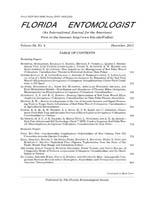Reliance on use of the Petri dish for bioassay studies has resulted in the majority of subterranean termite research being conducted in a manner that has not taken into account one of the most important feature of subterranean termites ecology: the soil in which they live. This artificial environment for bioassays, favored for its ease of use, may have resulted in accumulation of data about termite physiology, toxicology, pathology and behavior with limited biological relevancy. Caution should be taken when drawing conclusion from such experiments, because recent studies that made use of planar arenas (or ‘two-dimensional arenas’), which provided soil-foraging conditions for termites and visibility for observation, have produced findings that are either contradictory to or more complete than corresponding Petri dish studies. The result of this study showed that groups of termites kept in planar arenas had better vigor and survivorship after 60 d than groups kept in Petri dishes. We also describe a list of technical advantages that the use of planar arenas can provide over the use of Petri dishes, and suggest that entomologists planning future laboratory studies on subterranean termites should consider using a similar protocol that involves planar arenas.
How to translate text using browser tools
1 December 2011
Planar Arenas for use in Laboratory Bioassay Studies of Subterranean Termites (Rhinotermitidae)
Thomas Chouvenc,
Paul Bardunias,
Hou-Feng Li,
Monica L. Elliott,
Nan-Yao Su

Florida Entomologist
Vol. 94 • No. 4
December 2011
Vol. 94 • No. 4
December 2011
arena
bioassay
Petri dish
soil condition
subterranean termite




